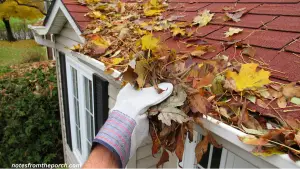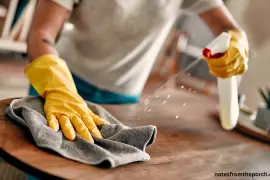How to Prepare Your Home for Winter Weather: Maintenance Hacks
Winter weather can be tough on homes, but with a few proactive steps, you can keep your home warm, safe, and protected. Here’s a guide to essential maintenance tips that will prepare your home for the colder months.
1. Seal Drafts Around Doors and Windows
Drafts around doors and windows can let in cold air, making your heating system work harder. Check for gaps and use weatherstripping or caulk to seal them. Adding draft stoppers to doors can also help prevent chilly air from entering.
2. Clean and Inspect Your Heating System
Regular maintenance of your heating system is key to keeping it efficient during winter. Change the filters, check for any strange noises or issues, and consider scheduling a professional inspection. A well-maintained system will heat your home more effectively and save on energy costs.
3. Protect Pipes from Freezing
Frozen pipes are a common winter issue. Insulate exposed pipes in unheated areas, like the basement or garage, and leave cabinet doors open to let warm air circulate around pipes. On especially cold nights, let faucets drip slightly to prevent pipes from freezing.
4. Inspect Your Roof and Gutters
Snow and ice can weigh down roofs and clog gutters, leading to potential damage. Clean your gutters of leaves and debris to prevent ice dams, and check for loose shingles that could let moisture seep in. If needed, install gutter guards to reduce buildup.
5. Prepare Outdoor Areas
Winter weather can also affect your outdoor spaces. Store outdoor furniture, cover your grill, and make sure walkways are clear of obstacles. Stock up on ice melt and keep a shovel handy for easy access when it snows.
6. Check and replace weather-exposed seals and flashing
– Inspect exterior door thresholds, window sills, and where siding meets roofline for signs of wear or gaps. Moisture intrusion in freeze/thaw conditions can lead to wood rot or mold.
– If you have storm windows, consider installing them or adding interior insulating panels to older single-pane windows.
– Make sure roof flashing (around chimneys, vents, skylights) is intact and sealed.
7. Service and inspect fireplaces & chimneys
– If you use a wood‐burning or gas fireplace, have the chimney flue inspected and cleaned to remove creosote buildup (which is a fire risk) and ensure proper draft.
– Check the fireplace damper—does it open/close fully and seal tightly when closed? A leaky damper lets warm indoor air escape.
– For gas logs or fireplaces, inspect the pilot light, venting, and carbon monoxide detectors.
8. Improve attic and crawl space insulation & ventilation
– Heat rises: cold weather can expose weak spots in attic insulation. Make sure you have adequate R-value for your region.
– Ensure attic vents (soffit, ridge, gable) are unobstructed—poor ventilation can contribute to ice dams.
– In crawl spaces or basement ceilings, check for insulation gaps and consider sealing rim-joist areas to reduce heat loss from the floor above.
9. Check backup systems and emergency preparedness
– Test your battery‐powered or generator backup if you have one (e.g., for sump pump, glass break sensors, security system).
– Ensure flashlights, candles, fire extinguishers, and extra batteries are accessible.
– Keep a supply of rock salt or sand, extension cords, and other tools you might need if a snow/ice event knocks out power or access.
10. Drain and winterize exterior water systems
– Shut off and drain exterior faucets/spigots; disconnect garden hoses and store them indoors. Leaving hoses attached can cause valves or pipes to burst when water freezes.
– If you have an irrigation/sprinkler system, winterize it by blowing out the lines or draining as appropriate.
– Cover any outdoor pool or hot tub equipment and add freeze protection if you live where sub-freezing temps are likely.
11. Inspect and maintain your home’s safety devices
– Test and replace batteries in all smoke alarms and carbon monoxide detectors—winter means more time indoors with heaters functioning.
– Check fire-extinguishers: make sure they’re rated (ABC type) and pressure gauge is in green.
– Ensure you have a clear, safe path from your home’s exits to the driveway or sidewalk and that lighting is adequate for shorter daylight hours.
Conclusion:
By taking these steps to winterize your home, you can enjoy a warmer, safer season. From sealing drafts to protecting pipes, these maintenance hacks will help you get through winter with ease and keep your home comfortable.



Comments are closed.